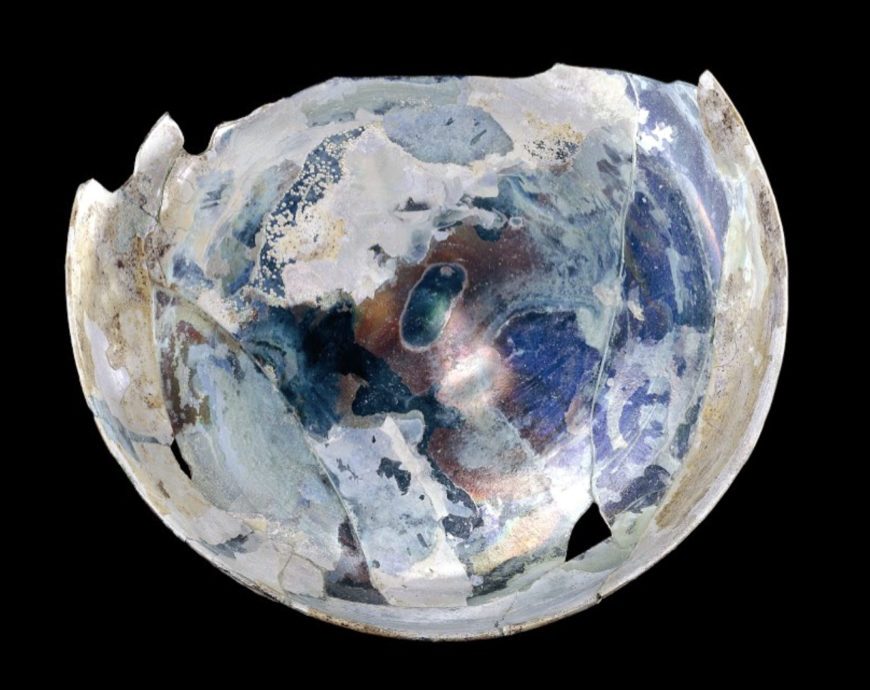
Shallow, pale green-blue, circular glass dish, Coptic period, 7th century, from al-Ashmunayn, Egypt, 20 cm in diameter (© Trustees of the British Museum)
A blown glass dish
Although glass and glazed stone beads appeared sporadically in Egypt from the earliest times, glass did not become popular until the New Kingdom (1550–1070 B.C.E.). It was used to make multicolored vessels, items of jewelry, amulets and inlays. For reasons that remain unclear, glass was not produced in Egypt for over 700 years between the end of the New Kingdom and the beginning of the Ptolemaic period (332–330 B.C.E.).
The technique of blowing glass, used to produce this dish, was introduced towards the end of the Ptolemaic period, and used throughout the Roman (30 B.C.E.–c. 384 C.E.) and Coptic periods. Using this method it was possible to produce vessels with very thin walls. Unlike the glass of the New Kingdom, blown glass was often clear. The opalescent appearance of this vessel is due to the glass deteriorating over time. The glass has become flaky, causing it to refract light like a prism.
Egypt was one of the main production centers for glass in the Roman Period. The vast quantities of glass found on town and monastic sites of the Roman and Coptic periods, like al-Ashmunayn in Middle Egypt where this dish was found, indicates that it was very popular for toilet equipment and table ware.
© Trustees of the British Museum
Additional resources:
P.T. Nicholson and I. Shaw (eds.), Ancient Egyptian materials and (Cambridge University Press, 2000)




